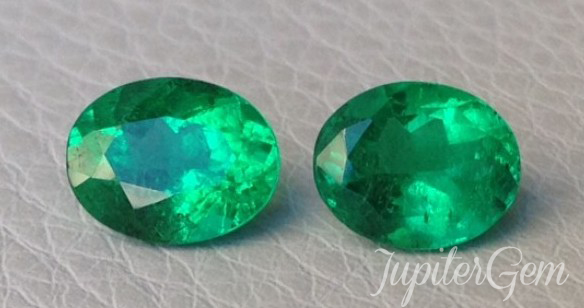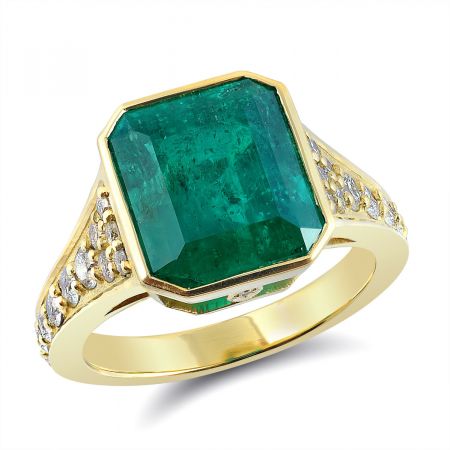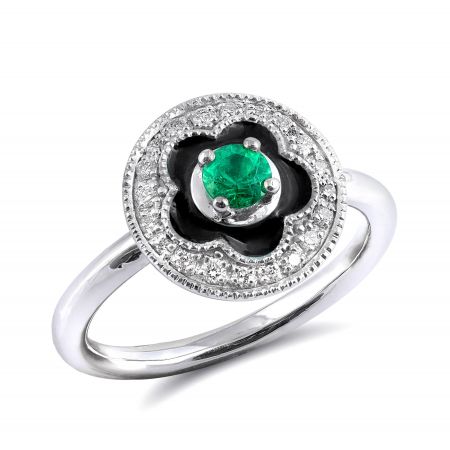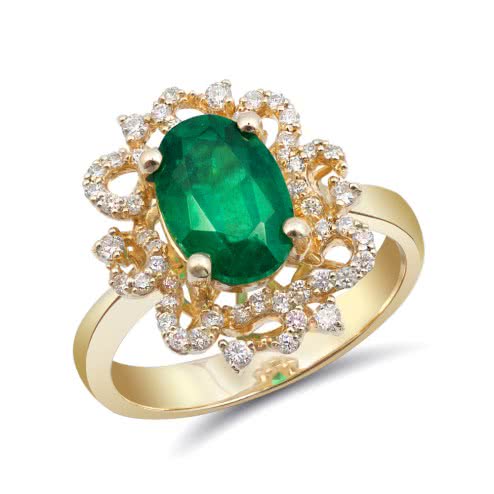


One of the ‘big four’ precious gemstones, emeralds have fascinated people for thousands of years. The name itself has become synonymous with the rich bluish-green hue of the finest examples. May babies can count themselves lucky to have this mesmerizing gem as their birth stone.
The Science
Emeralds are the most well known member of the beryl mineral species. Others include aquamarines (pale blue), morganites, (pale pinky-orange) and heliodors (yellow). Emeralds usually get their color from trace amounts of chromium and iron, although vanadium can also be the cause of their green hue. Crucially, a beryl can only be called an emerald when its bluish-green color is sufficiently dark and saturated – otherwise it is simply known as a green beryl.
In Antiquity
Cleopatra adored emeralds. For the early Egyptians emeralds were a symbol of eternal life, their color a reminder of the fertility granted to the land by the Nile’s yearly flooding. Astonishingly, there is some evidence that her famous mines were in operation as far back as 3500BC.
The Indian love of emeralds goes back almost as far as the Egyptian. The peoples of the sub-continent regarded them as sacred and believed them to have the ability to purify the soul along with bringing success and wealth. It is even thought the ancient Greek term for emeralds ‘smaragdos’ was derived from the Sanskrit word for green.
In Western antiquity, the Greeks and then the Romans continued the love for emeralds. There was a widespread belief that emeralds were good for eyesight and it was even said that the emperor Nero used an emerald lens through which to view gladiatorial spectaculars. This is not as mad as it may at first seem – science has now proved that the color green does indeed help soothe eye strain.
Mistaken Identity
It was only at the end of the 18th century, when the first chemical analysis of emeralds was first published by Nicolas Louis Vauquelin, that people were able to differentiate between emeralds and other green stones such as tourmalines or quartz. The truth is that throughout history any clear deep green stone has generally been called an emerald. We do know that Cleopatra’s famous mines did produce true emeralds – although of a quality we would consider highly inferior today. But how many of the ‘emeralds’ praised throughout antiquity were actually real emeralds it is impossible to know.
The ‘New’ World
The Egyptian mines remained the world’s major source for emeralds until discoveries in the Americas in the 16th century. Emeralds of the deep bluish-green that we love today first came to the west as a result of the Spanish conquest in the 16th century. In the jungles of the Andes the conquistadors found not only gold, but shining emeralds too. The Incans and Aztecs held emeralds to be sacred and used them to adorn images of the gods. Many of these stones were taken across the Atlantic to adorn European crown jewels, religious artifacts and fine jewelry.
Another New World?
Just like Burmese rubies and Kashmiri sapphires, Colombian emeralds hold a promise of quality that spurs the highest prices. However, recently, important discoveries have been made in east and southern Africa, with the country of Zambia a new source of top quality emeralds. In Asia, Pakistan and Afghanistan are also major producers.
Gardening
The majority of emeralds usually contain inclusions which, as they are often described as mossy-looking, are sometimes referred to as ‘jardin’ – French for garden. These emeralds are often treated to improve their appearance, with interventions including fracture filling and heat treatments. All of these interventions affect the price with the most valuable emeralds being those that have had no treatments. Reputable dealers will always tell you what treatments your emeralds have been subject to.
Care
Emeralds do require some care. As they rank lower on the Mohs hardness scale than diamonds or sapphires you must be aware that they are more prone to scratching than these stones. Heat, chemicals, pressure changes and vibrations can all have negative impacts on your emeralds. Treat them well, however, and you will have years of enjoyment from the most enigmatic and prized of the green gems.
Spring into Action!
With the weather warming up in the Northern Hemisphere and the trees back in their leafy green finery, why not take some inspiration from nature and add a bit of green to your life. If you were born in May then you really have no excuse! At JupiterGem we have a superb selection of some of the world’s finest emeralds. Our experts would love to help you select your perfect stone.














